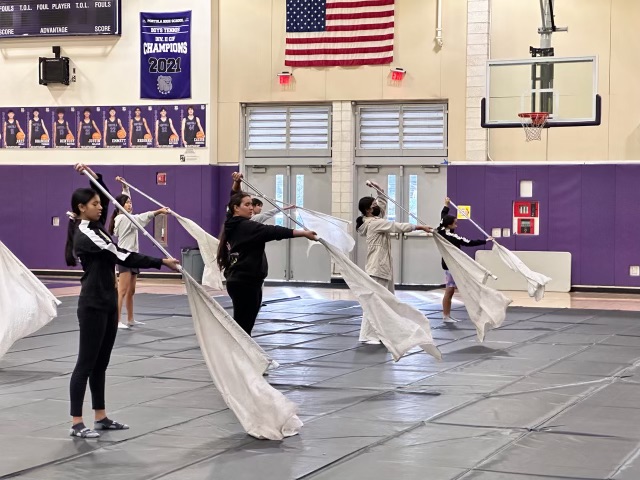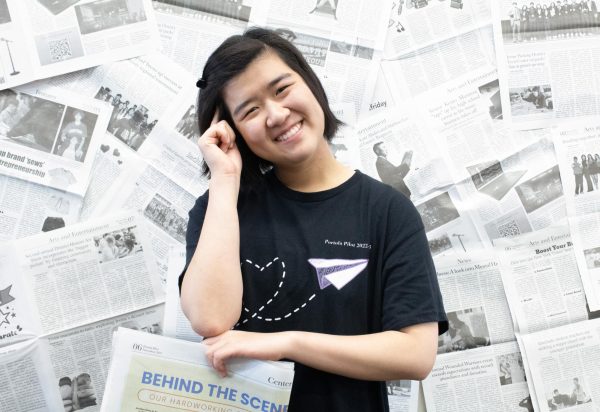As winter’s icy chill settles over the campus, the gymnasium fills with the warmth of vibrant flags and rhythmic music in preparation for the winter guard season — the time when students transform dance, acting and passion into a symphony of colors.
Winter guard is an indoor extension of the color guard season that combines flags, sabers and other equipment with gracefully choreographed dances. Although winter guard officially begins at the end of second semester in February, preparation begins early so students can master spinning skills and footwork, according to Alice Sim.
Creating a compelling performance demands more than just physical prowess; it also requires confidence in acting skills and the ability to execute exaggerated movements that distinguish their lines, according to color guard coach Rebekah Daigh.
“Field season is about big and bold movements, while winter guard focuses on technique and excellence and execution,” Daigh said. “In winter guard, the audience is about five to ten feet away from the performers, so facial expressions and characterization of body movements must be more articulate.”
Due to the rigorous nature of color guard, members have created strong bonds with each other and quickly integrated new members into the team. These relationships extend beyond practices, being integral to the team’s dynamic and energy.
“For colorguard [we’re] especially close to each other, because we practice during weekends too,” freshman Alice Sim said. “We always have afternoon practice and we have things we communicate with. The juniors and seniors, especially on the first day, kept asking us questions and kept trying to talk to us. It was great.”
By celebrating each other’s successes in learning new skills, the team quickly created an atmosphere of community, working together to improve their spinning skills and expressive storytelling.
“It’s all about the atmosphere,” color guard team captain and junior Jimin Han said. “I feel like what we’ve been doing this year is a big leap from what we were doing before, so I’m really looking forward to what we’re going to be able to achieve this season.”
Color guard requires students to reflect on their abilities and constantly strive to learn new skills, according to Han. Although they are aided by coaches and returning athletes, they must apply what they have learned to competition performances.
“As cheesy as it sounds, I as a coach can give them the tools, but they have to be the ones to pick them up and learn how to use them,” said Daigh. “I can honestly say that the perseverance and dedication these kids have displayed is awe-inspiring. They understand that the choices they make have a direct impact on their success or failure, and every day they make the conscious decision to improve.”





